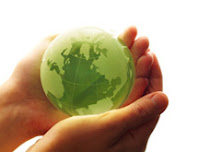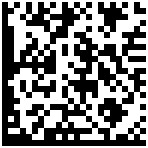I encourage printing this post and keeping it handy.
Consulting firm
Social Technologies has a great set of
12 briefs this month that shed light on the top areas for technology innovation through 2025. Consider this list an investing "crystal ball".
 THE TOP 12 AREAS FOR TECHNOLOGY INNOVATION BY 2025
THE TOP 12 AREAS FOR TECHNOLOGY INNOVATION BY 20251.
Personalized medicine—With the initial mapping of the human genome, scientists are moving rapidly toward the following likely breakthroughs for
gene-based products and services:
• creation of an individual’s genome map for a retail price of less than $1,000
• correlation of specific genes and proteins with specific cancers, Alzheimer’s, heart disease, and diabetes, which will allow both physicians and patients to anticipate, plan for, and mitigate, if not cure, DNA-based health challenges
• development of pharmaceuticals that treat gene-based diseases, replacing surgeries and chemotherapy
2.
Distributed energy (DE) (
The Next Internet)—The evolution of distributed energy will reflect that of computing: just as computing has migrated from the 20th century’s centralized model (powerful mainframes delivering applications to remote workstations) to today’s decentralized model (PCs and networks), so
energy generation and delivery will move from central sources to DE, increasingly featuring local generators that can be linked when needed for greater output. Specific innovations will include:
• advanced electric storage devices and batteries at all scales
• new power systems with source-switching flexibility
• new energy management systems
3.
Pervasive computing—(
Physical World Connection)Almost every device or object in consumers’ lives will be both smart and networked, giving rise to an
“Internet of things.” Pervasive computing will drive the convergence of computing, Internet access, voice communications, and television—ultimately blurring categories of infotech products and services. Specific breakthroughs will include:
• very simple and inexpensive computing devices with integrated wireless telephone and Internet capabilities (the worldwide $100 computer)
• the “semantic Web,” enabled by Web data that automatically self-organizes based on its content, allowing search tools or software agents to identify the actual relevance of Web pages—not just find keywords on them
• intelligent interfaces, in some cases enabled by virtual reality
4.
Nanomaterials—Although nanotechnologies have received much attention, the R&D is progressing very slowly. But the experts expect major breakthroughs within the next two decades, including
inexpensive ways to produce mass quantities of nanomaterials. In addition, the
function of nanomaterials will move from “passive” to “active” with the integration of nanoscale valves, switches, pumps, motors, and other components.
5.
Biomarkers for health—While DNA-based diagnoses and cures have long been under the spotlight, this category of breakthroughs stresses prevention. Consumers today believe their lifestyle choices have long-term consequences for health, and at the same time they are becoming more knowledgeable about the life sciences. They want to be able to monitor their vital signs, broadly defined, in ways that are as affordable, easy to use, and private as home scales for monitoring weight. Potential breakthroughs here include:
•
individualized, private, and self-administered diagnostics for multiple physical parameters such as blood sugar, urine, C-reactive proteins, HDL, and LDL, as well as home diagnostic kits that detect early signs of diabetes, heart disease, and types of cancers
• personalized exercise equipment and regimens that deliver customized benefits (for weight control, blood pressure, blood sugar, etc.)
• advanced CAT scans, MRIs, and brain scans to identify disorders earlier and more accurately at less cost
6.
Biofuels—The expert panel felt strongly that significant further advances will be made in
renewable biomass fuels, allowing them to supplement and eventually replace gasoline and diesel. Genetically modified organisms (GMOs) may be key to the development of biofuels. Anticipated breakthroughs include:
• high-energy (as measured in British thermal units, or Btu) blends of gasoline and diesel with biofuels (beyond the ethanol blends known today)
• biomass production of a methanol that can be used as a fuel for fuel cells
• new discoveries in plant genetics and biotechnologies specifically for energy content
7.
Advanced manufacturing—The long-term trend continues to favor “mass customization,” or the ability to produce low quantities of specific products in a profitable and high-quality way. Such processes may apply not just to factory manufacturing, but to many applications—potentially ranging from desktop publishing to specialty foods production. The experts anticipated the following breakthroughs by 2025:
• advanced computer-aided design and control
• multiple variable and inexpensive sensors linked with computers
• expert systems and advanced pattern-recognition software for very tight quality control
8.
Universal water—Water is becoming increasingly scarce. Less than 2% of the planet’s ample store of water is fresh, and much of that is threatened by pollution. The future of universal water is simple: use less; keep the available freshwater clean; and make more freshwater from saltwater to offset critical shortfalls. Enabling technologies will include:
• ultra-fine filters (probably from nanotechnology)
•
new energy sources for desalination and purification, including hybrid systems that combine conventional and alternative power—especially solar power
• smart water-use technologies for agriculture and industry
9.
Carbon management—Discussions about mitigating climate change have focused on controlling greenhouse gases, yet methane and carbon dioxide, to name two principal greenhouse gases, are presently more difficult to measure and control than previous air pollutants. The expert panel, however, anticipates that technologies currently in R&D will prove to be effective for these gases—and that this area of work will be extremely important to consumers of all types:
• effective “measure, monitor, and verify” systems
• affordable and effective
carbon capture and storage technologies and systems for coal-burning power plants• low to zero emission controls for transportation
10.
Engineered agriculture—This area of DNA-based R&D is closely related to innovations in personalized medicine and biofuels, but with applications in agriculture and nutrition. Potential breakthroughs include:
• identification of specific genomes for desired growing and use qualities
• crop-produced pharmaceuticals and chemical feedstocks
•
crops designed specifically for energy content and conversion11.
Security and tracking—Although the experts gave less weight to breakthroughs for national security and counterterrorism than to those for consumer products and services (probably a result of how the topic question was framed), they envisioned a continued need for personal safety and security systems, above and beyond those of governments. Examples of potential breakthroughs in the personal-security realm include:
• completely autonomous security-camera systems with algorithms able to correctly interpret and identify all manner of human behavior
• multiple integrated sensors (including remote sensing)
•
radio frequency (RF) tags for people and valuables(Physical World Hyperlinks)12.
Advanced transportation—In addition to the consideration of energy sources for private transportation, the experts identified potentially significant breakthroughs in the management of private transportation, as well as advances in public transportation. These include:
• organized and coordinated personal transportation through wireless computer networks, information systems, and Internet access
• onboard sensors and computers for smart vehicles
• advanced high-speed rail
Trends, drivers, and challenges ahead
How fast will these breakthroughs spread to consumers around the world? “That depends on social, economic, and regulatory factors,” Chiavetta says.
Drivers include the growing global population and resulting pressures on energy and natural resources, urbanization, aging populations which require more resources from both government and society—in particular, baby boomer demands for longevity and good health—and advances in information and communications technology, biotechnology, and nanotechnology.















